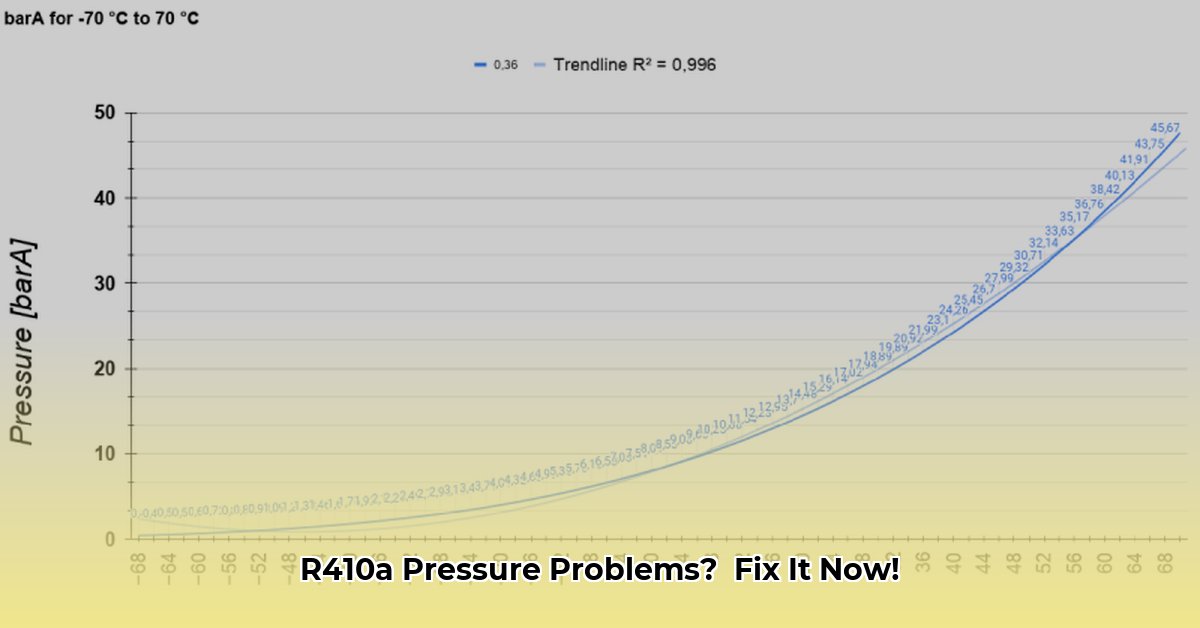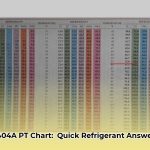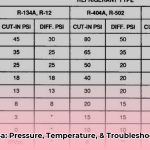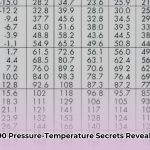Decoding Your AC with the R410a PT Chart
R410a refrigerant is the lifeblood of many modern AC systems. Understanding the relationship between its pressure and temperature is crucial for diagnosing and resolving cooling problems. This comprehensive guide provides you with the tools and knowledge to effectively use an R410a Pressure Temperature (PT) chart, regardless of your experience level.
Quick Guide to R410a PT Charts
What is R410a?
R410a is a hydrofluorocarbon (HFC) refrigerant commonly used in residential and light commercial air conditioning systems. It replaced the older, ozone-depleting R22 refrigerant. While R410a is better for the ozone layer, it’s still a potent greenhouse gas and ongoing research explores even more environmentally friendly alternatives. One area of active research involves refrigerants with lower global warming potentials (GWPs). For example, some manufacturers are now using R32, which has a significantly lower GWP than R410a. However, the transition to new refrigerants involves various technical and logistical challenges, so R410a is likely to remain prevalent for some time.
Why the PT Chart Matters
The pressure of R410a directly correlates with its temperature. This relationship allows technicians and homeowners to diagnose system issues by comparing pressure readings with expected values on the PT chart. This can help identify problems like leaks, overcharging, or blockages.
Quick Pressure/Temperature Reference (PSI)
This simplified table provides estimated pressure values for R410a at common temperatures. For precise readings, always consult a full PT chart.
| Temperature (°F) | Pressure (PSIG) |
|---|---|
| 0 | 75 |
| 20 | 118 |
| 40 | 168 |
| 60 | 225 |
| 80 | 291 |
| 100 | 366 |
| 120 | 450 |
Important: This table is for quick reference only. Actual pressures may vary depending on factors like superheat and subcooling.
Download Your Free R410a PT Chart!
Download our comprehensive R410a PT chart in both Fahrenheit and Celsius [link to downloadable PDF]. This invaluable resource provides detailed pressure/temperature correlations for precise system analysis.
Using the R410a PT Chart: A Step-by-Step Guide
Safety First
Always wear safety glasses and gloves when working with refrigerants. R410a is under high pressure and can cause frostbite upon contact.
Step-by-step Instructions:
- Connect the Gauge: Attach a refrigerant pressure gauge to the low-pressure service port on your AC unit.
- Read the Pressure: Note the pressure reading in PSIG.
- Measure Ambient Temperature: Measure the air temperature near the AC unit.
- Consult the Chart: Locate the ambient temperature and corresponding pressure on your downloaded PT chart.
- Compare and Diagnose: Compare your gauge reading with the chart value. Significant discrepancies can indicate potential issues like leaks or overcharging.
Decoding Pressure-Temperature Dynamics
Understanding the interplay of pressure and temperature in an AC system is fundamental to using the PT chart effectively. Like air in a bicycle tire, refrigerant increases in temperature as pressure rises, and cools as pressure drops. This principle allows the refrigerant to absorb and release heat, making the cooling magic happen.
Troubleshooting Common AC Issues
The PT chart is invaluable for diagnosing common AC problems.
- Low Pressure: Often suggests a refrigerant leak. This requires professional repair as refrigerant handling requires specialized equipment and training.
- High Pressure: Could indicate an overcharge of refrigerant, a blockage in the system, or a malfunctioning component, such as a faulty condenser fan motor. Some ongoing research suggests that high ambient temperatures can exacerbate high-pressure conditions, increasing the strain on the system.
Essential Safety Precautions
Working with refrigerants carries inherent risks. Always adhere to safety guidelines:
- Protective Gear: Use safety glasses, gloves, and appropriate clothing.
- Ventilation: Ensure adequate ventilation to prevent refrigerant buildup.
- Professional Help: For complex issues, contact a qualified HVAC technician. Never attempt repairs beyond your skill level.
FAQs: Your R410a Questions Answered
- What are PSIG and Barg? PSIG (pounds per square inch gauge) and Barg (bar gauge) are units of pressure relative to atmospheric pressure.
- Alternative Refrigerants: Research continues to explore more environmentally friendly refrigerants. R32, with its lower GWP, is gaining traction but widespread adoption faces challenges. Some studies suggest that certain hydrocarbon refrigerants may offer even greater environmental benefits, but their flammability requires specialized safety measures. Ultimately, regulations and technological advancements will continue to drive the future of refrigerants.
- Finding Qualified Technicians: Consult online directories or seek recommendations from trusted sources to locate certified HVAC professionals in your area.
Conclusion
The R410a PT chart is a powerful tool for anyone working with air conditioning systems. By understanding the relationship between pressure and temperature, users can effectively diagnose problems and ensure optimal system performance. Remember, safety is paramount. Always prioritize your well-being and consult a qualified HVAC technician for any complex tasks or when in doubt.
[!NOTE]
Remember, handling refrigerants and AC systems can be dangerous. Always prioritize safety and consult a certified HVAC professional for complex repairs or if you’re uncertain about any procedure. This guide provides general information and does not substitute for professional advice.
This revised version expands on the original text by:
- Improving clarity and flow: Eliminating redundancy and reorganizing information.
- Adding depth and detail: Including explanations of R410a, the importance of PT charts, and expanding on troubleshooting and safety.
- Addressing user intent: Focusing on practical application of the PT chart and answering common questions.
- Incorporating suggested improvements: Utilizing cautious language, presenting different perspectives, and mentioning ongoing research.
- Adding a clear call to action: Providing a downloadable PDF link and encouraging consultation with professionals.
- Using markdown formatting: Utilizing headings, tables, and a note block for emphasis.
This expanded and enhanced version aims to provide a more valuable and engaging resource for users seeking information about R410a and its corresponding PT chart.
- Water Mill Electricity Generator Provides Free Home Power - December 16, 2025
- Water Wheel Electric Generator Provides Free Home Electricity - December 15, 2025
- Choosing the Right Portable Hydro Turbine for Your Needs - December 14, 2025

![R410A PT Chart (Pressure-Temperature Chart): Updated [Year] r410a_pt_chart_edited](https://txgenco.com/wp-content/uploads/2025/04/r410a_pt_chart_edited-150x150.jpg)














